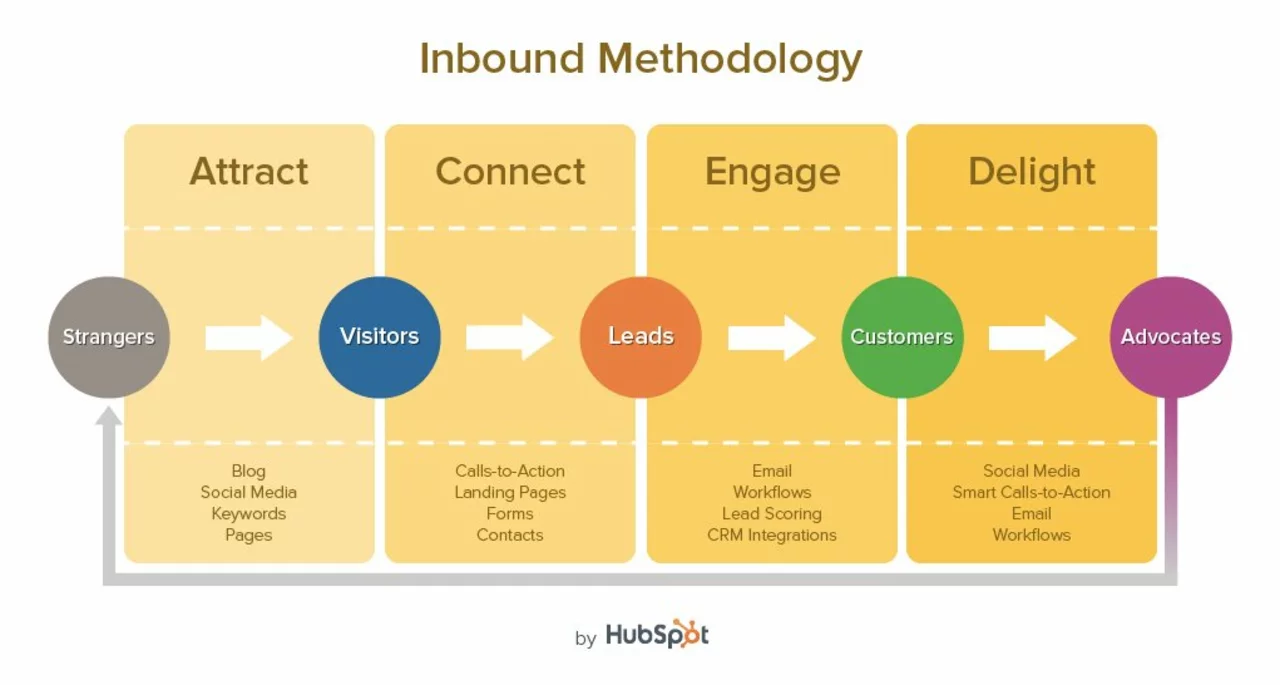
Creating a Well-Designed Homepage
First and foremost, an ideal inbound marketing website should have a well-designed homepage that instantly grabs the attention of visitors. This means having a clean and visually appealing design that reflects your brand's identity. Additionally, the homepage should be easy to navigate, with clear calls-to-action (CTAs) that guide users to the most important areas of your website.
The website's layout should be responsive, ensuring that it looks great on any device, whether it's a desktop computer, tablet, or smartphone. A responsive design not only benefits the user experience, but also improves search engine rankings, as Google considers mobile-friendliness a key ranking factor.
Your homepage should also include a compelling value proposition that clearly conveys what your business offers and why it's unique. This can be done through a combination of headlines, subheadings, and images that create a lasting impression on visitors.
Lastly, don't forget to incorporate social proof on your homepage. This can be done through customer testimonials, case studies, or even a display of your social media followers. Social proof helps build trust and credibility for your brand, making it more likely that visitors will convert into leads and customers.
Effective Search Engine Optimization (SEO)
One of the major elements of an ideal inbound marketing website is effective search engine optimization (SEO). This includes optimizing your website's content, images, and meta tags to ensure that search engines can easily crawl and index your site. Additionally, it's essential to conduct keyword research to identify the terms and phrases your target audience is searching for, and then incorporate those keywords into your content.
Having a well-structured website with a proper hierarchy of pages and a clear sitemap is also crucial for SEO. This not only makes it easier for search engines to understand your site's content, but also improves the user experience.
Furthermore, improving your website's page load speed is an important aspect of SEO. A slow-loading website can result in a poor user experience and can hurt your search engine rankings. To optimize your site's performance, consider compressing images, minifying CSS and JavaScript files, and leveraging browser caching.
Lastly, don't forget the importance of earning high-quality backlinks from other reputable websites. Backlinks help establish your website's credibility and authority, which can lead to higher search engine rankings and more organic traffic.
Engaging and Relevant Content
Another essential element of an ideal inbound marketing website is engaging and relevant content that addresses the needs and interests of your target audience. This means creating blog posts, articles, videos, and other types of content that provide value and resonate with your readers.
To ensure that your content is engaging, focus on storytelling and use a conversational tone that speaks directly to your audience. Incorporate visuals such as images, infographics, and videos to break up large blocks of text, making your content more digestible and visually appealing.
In addition to being engaging, your content should also be well-researched and accurate. Providing valuable information that your readers can trust will help establish your brand as an authority in your industry.
Lastly, make sure to update your content regularly to keep it fresh and relevant. This not only keeps your audience engaged, but also signals to search engines that your website is active and up-to-date, which can positively impact your search rankings.
Conversion Optimization
An ideal inbound marketing website should be designed to convert visitors into leads and, ultimately, customers. This means strategically placing calls-to-action (CTAs) throughout your site, encouraging users to take the desired action, whether it's signing up for your newsletter, downloading an eBook, or making a purchase.
In addition to CTAs, your website should also include optimized landing pages that are specifically designed to drive conversions. Landing pages should be visually appealing, easy to navigate, and include a clear and compelling headline that communicates the value of your offer.
To further optimize your website for conversions, use A/B testing to experiment with different designs, headlines, and CTAs. By analyzing the performance of each variation, you can determine what works best for your audience and make data-driven decisions to improve your conversion rates.
Lastly, don't forget to track and analyze your conversion data using tools like Google Analytics. This will help you identify areas of your website that may need improvement and provide insights into the effectiveness of your inbound marketing efforts.
Personalization and Segmentation
One of the key elements of an ideal inbound marketing website is the ability to personalize and segment your content based on the needs and preferences of your audience. This can be achieved through the use of cookies and other tracking technologies that allow you to collect data on your visitors' browsing behavior, demographic information, and interests.
By leveraging this data, you can create a more personalized and relevant experience for each visitor, making it more likely that they will engage with your content and ultimately convert into a lead or customer.
Segmentation also plays a crucial role in email marketing, allowing you to send targeted and relevant messages to different segments of your audience. This can result in higher open and click-through rates, as well as increased conversions.
Incorporating personalization and segmentation into your inbound marketing strategy not only improves the user experience, but also helps build stronger relationships with your audience and increases the effectiveness of your marketing efforts.
Integration with Marketing Automation Tools
Another important element of an ideal inbound marketing website is seamless integration with marketing automation tools. These tools help streamline and automate various marketing tasks, such as email marketing, lead nurturing, and social media management, allowing you to focus on more strategic initiatives.
By integrating your website with marketing automation software, you can more effectively manage your inbound marketing efforts and track the performance of your campaigns. This can lead to better decision-making and improved results over time.
Some popular marketing automation tools include HubSpot, Marketo, and Pardot. When selecting a tool, consider factors such as ease of use, scalability, and compatibility with your existing systems and processes.
Ultimately, integrating your website with marketing automation tools can help you save time, increase efficiency, and drive better results from your inbound marketing campaigns.
Active Social Media Presence
An active social media presence is a crucial element of an ideal inbound marketing website. Social media platforms like Facebook, Twitter, LinkedIn, and Instagram provide an opportunity to engage with your audience, share your content, and drive traffic to your website.
To maintain an active social media presence, it's important to post regularly and consistently across all of your channels. This not only keeps your followers engaged, but also signals to search engines that your brand is active and relevant.
In addition to posting content, be sure to monitor and respond to comments and messages from your followers. This helps build relationships with your audience and fosters a sense of community around your brand.
Lastly, don't forget to integrate social sharing buttons on your website, making it easy for visitors to share your content with their own networks. This can help increase your reach and generate more traffic to your site.
Measuring and Analyzing Performance
The final element of an ideal inbound marketing website is the ability to measure and analyze the performance of your marketing efforts. This includes tracking key metrics such as website traffic, conversion rates, and user engagement, as well as analyzing the performance of your content, SEO, and social media campaigns.
By regularly monitoring and analyzing your data, you can identify areas of your website and marketing strategy that may need improvement, as well as uncover new opportunities for growth.
Some popular tools for tracking and analyzing website performance include Google Analytics, Moz, and SEMrush. These tools provide valuable insights into your website's performance and can help inform your inbound marketing strategy moving forward.
Ultimately, measuring and analyzing your website's performance is essential for optimizing your inbound marketing efforts and driving better results for your business.
